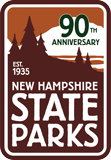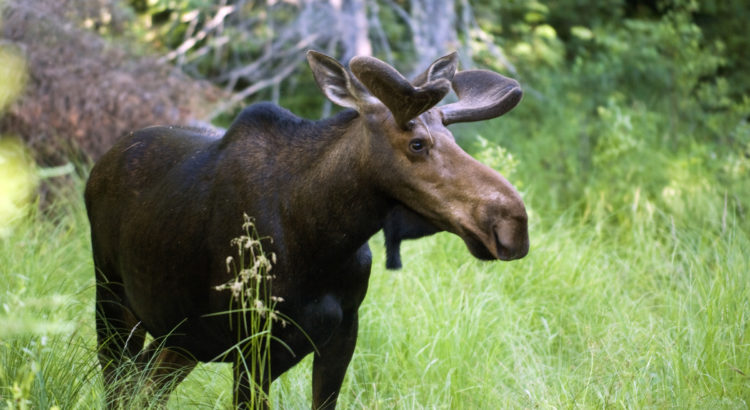By: Thomas Cummings, SCA Interpretative Ranger for Umbagog Lake State Park
Alces Alces is the Latin name for North America’s largest member of the deer family that is still alive today. Moose are known for their impressive size, which makes finding one as you explore New Hampshire a real treat. By understanding their behavior and habitat, perhaps you will come across these critters.
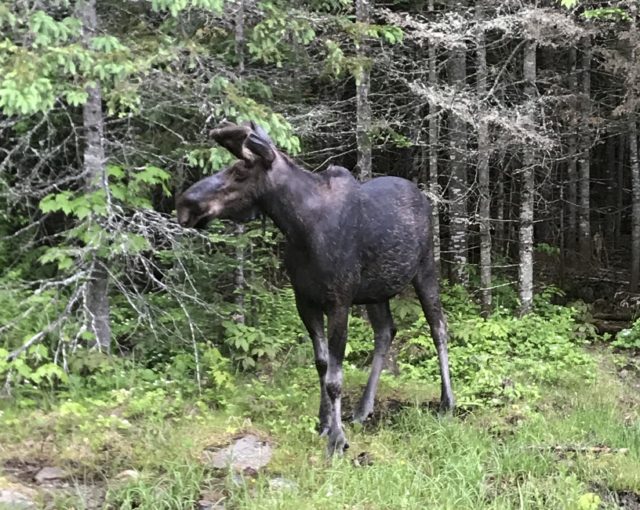
In North America there are number of different sub-species of moose. Here in New Hampshire you will find is the Eastern moose. These moose stand roughly 5.6 – 6.6 ft (1.4 – 2.1 m) at the shoulder, and can weigh up to 1,400 lbs (634 kg). Male moose, otherwise known as a bull moose, are the only moose to grow antlers, which can span up to 6 ft (1.5 m) across. The antlers grow throughout the summer, lose the “velvet” in the fall, and fall off during the winter. This cycle repeats every year of a bull’s life. Female moose, known as cows, do not grow any antlers. Baby moose are known as calfs, and will stay with their mother for up to 18 months.
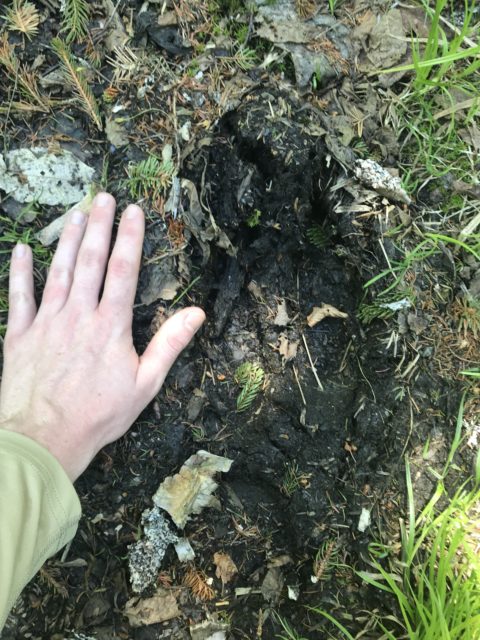
Moose are very tolerant to the cold weather through some of their adaptions. One such adaption is the different layers within their fur. The bottom layer of fur is wooly and soft to retain body heat. The top layer of fur is hollow and is filled with air, which help the moose stay afloat while swimming, and keep them better insulated.
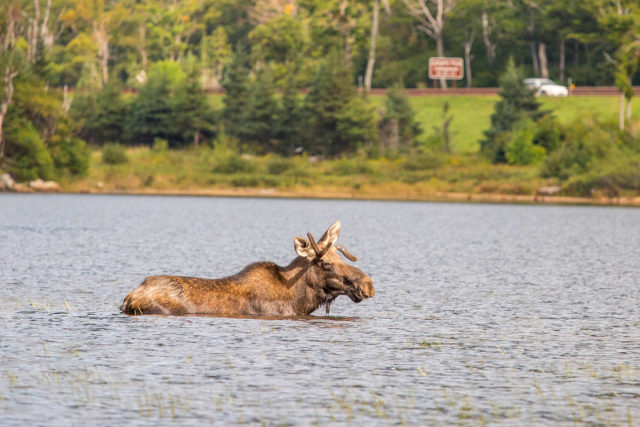
Moose are herbivores, meaning they only eat plants. Their diet consists of both aquatic and land based plants. Therefore, an ideal habitat for a moose will consist of a young dense forest, with access to ponds and lakes that moose would be able to wade in. This not only provides a food source for the moose, but also shelter from predators and the summer heat.
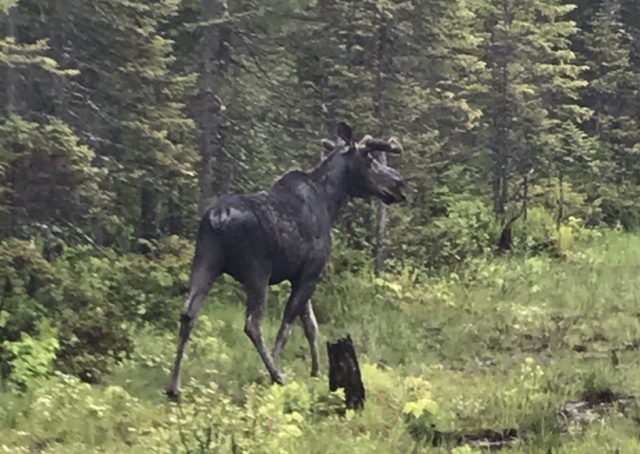
Life as a moose is not without challenges however. The summer heat forces the moose to either cool off by laying down in the shade of a thick forest, or go swimming. Another challenge moose face is the winter tick. These ticks latch onto moose during the fall and will remain attached until early spring. With the attempts to remove some of the itching ticks, some moose will rub and scratch themselves raw. These moose have white appearance and referred to as “Ghost Moose“. This abnormal behavior can lead to them being prey on by predators, and with leave moose with little protection to the winter’s cold.

More about NH Fish & Game’s moose research here
Roads and highways are a location where you are most likely to come across a moose. These tend to be during the time of day moose are most active, which is at dawn and dusk. Be sure to always brake for moose as it can save your life. This is because a moose’s center of mass is above the hood of most passenger vehicles. In the event of a collision, the weight will land on the front roof beams and potentiality the occupants in the front seats.
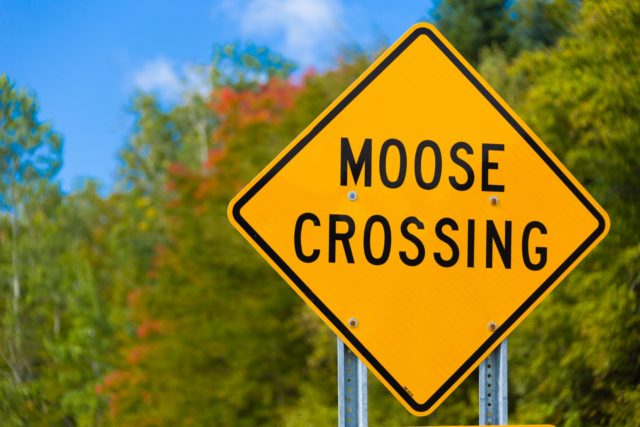
So as you travel in New Hampshire be sure to look for signs of moose in the area. Here are some good questions to ask yourself as you look for signs of moose in the area: Are there paths on the side of the road with big hoof prints? Are there several small ponds and lakes nearby? Is the area filled with dense forest or open meadows?
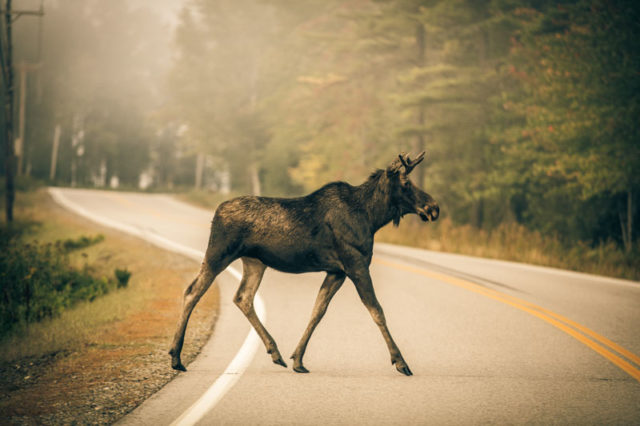
If you wish to take a photo of a moose, be sure to give the animal plenty of space. If you are in a vehicle, do not get out to get a picture. This not only puts you in danger, but it also puts unnecessary stress on the moose.
And remember to brake for moose, as it could save your life!
